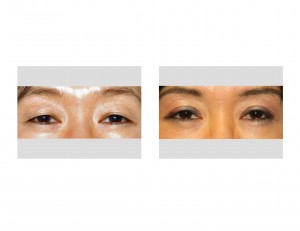China has emerged from a long history of an agrarian background to rival the United States as an economic superpower. It has done so by the sheer power of mobilizing its massive manpower into an industrial manufacturing base. With the greater affluency that has come from a trade surplus has come the emergence and popularity of cosmetic surgery. With young adults in cities such as Shanghai and Beijing being exposed to marketing images of beautiful women with Western features, the number of cosmetic surgeries in China continues to increase at a percent that probably rivals the annual increase in its gross national product.
The rising trend in what some have called ‘Westernized cosmetic procedures’ is a reflection of the shrinking size of the global world. Chinese women exposed to American and European beauty ideals have understandably been influenced. While I don’t think most are trying to change their cultural heritage, they are trying to improve their appearance through what I call a cultural mosaic approach. (softening and blending features) The most popular procedures sought in people of Chinese descent is eyelid reconstruction, nose augmentation, cheek and jaw angle reduction, and breast enlargement.

The Chinese nose is typically flatter and wider. The most common need to improve this nose type is dorsal or bridge augmentation. By bringing the bridge of the nose higher, it makes it look slimmer and can give the tip a smaller and less flat appearance. The debate is how to achieve bridge height increase… using either an implant or cartilage graft. There are advocates on both sides of that fence but implants are most commonly used because it is much easier. I love a good rib graft and know that it is better long-term but I can also appreciate the postoperative discomfort and scar from a rib graft harvest is not very appealing. As an amalgamated approach, I place the synthetic implant through an open rhinoplasty approach and wrap it with an acellular dermal graft to thicken its soft tissue coverage.
Facial skeletal alterationis done with the idea of modifying a square and more flat shape. Two facial bone areas that can be changed is cheek (zygomatic) width and jaw angle prominence. Both these areas must be carefully done to be successful. Cheek reduction is best done by anterior and posterior osteotomies done through an intraoral approach. Jaw angle reduction can be done by sawing off the angle but that can often leave a very blunted appearance. Best results come from a combination of thinning the jaw angle and not overreducing the jaw angle point.

Dr. Barry Eppley
Indianapolis, Indiana


